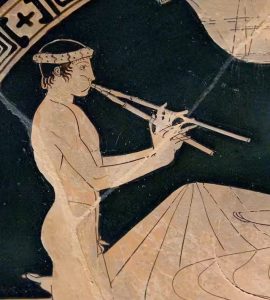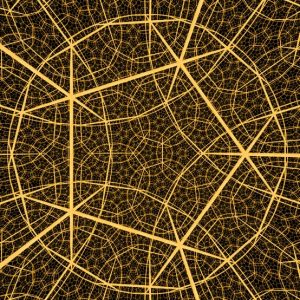
Contemplative Listening
Contemplative Listening is based on engaging with questions of how sound and music inform and affect our individual and collective subjectivity. Radical or deep listening is an intersection between interiority and exteriority, where through single-pointed concentration on sound, one experiences and co-creates an ontologically immersive sound-world. Based on exclusive concentration through the hearing sense consciousness one enters into another “way of knowing”- a sonic reality governed by the ontogenesis of harmonic intensities and resonance. What may a sonic ontology be like, and how can we discover new ways of becoming based on sonic ways of knowing?
Modernity, beginning in the European enlightenment, has colonized and globalized itself based on a hegemony of rational epistemology based on the centering of the cogito. This means that rationality is assumed to be the highest measure of humankind, and in modernity has becoming the ontological drive to order and classify the elements of the cosmos for anthropocentric (capitalist) interests. The sense of sight has been co-opted by the rationalizing drive of modernity, as sight has a natural tendency to specialize time. This has resulted in the flattening of space-time into commodifiable bytes of consumption. How have our other senses been co-opted by this hegemonic agenda of modernity? How has sound and music been flattened into space so as to serve the production and consumption of capitalism?
Based on these questions, can we challenge the regime of modernity by reframing questions of our becoming through a reengagement of our senses outside of the overdetermination of rationality as sight/image? Can we reclaim our subjectivity from the desire production of capitalistic machines and reconstruct ourselves on our own terms based on alternative modalities of becoming? I suggest we can through the meeting of radical or deep listening and contemplation.
Practice
Contemplative listening is an individual or collective practice that aims to reengage, reimagine and re-enchant our sonic worlds, hence displacing one’s habitual modes of perception privileging sight/rationality. This practice can be done by entering into a self-reflexive state of inward contemplation by simply experiencing, to the fullest conscious fidelity, ones relationship and engagement with sound.
Listen to your immediate surroundings no matter what they happen to be. Open your field of awareness and allow your sonic horizon to encompass a broader bandwidth/range. Simply be present to sound in your sound environment as-it-is. Try not to analyze, rationalize or intellectualize what you are hearing. Try to avoid conceptualizing the sound into mental categories or classifications such as good/bad, pleasant/unpleasant. Just be with the sound as-it-is. Be with the sensations of the sound in-themselves.
How do you experience movement within this sound-space? As you sink more deeply into single pointed identification with your sound-world, how does your experience of time change? What sensations develop? What moods or feelings develop? What does the atmosphere of this soundscape lead you to hear/feel/see? What can you learn from this soundscape?
Contemplative Listening can be practiced in any environment. Here are some ideas:
• Urban soundscapes
• Rural/Natural soundscapes –
• Sound Art
• Art Music (classical musics)
• Popular music
• Ambient music
• Meditative music
how can you add to this list?
how can this list become infinite…?
By: Jonathan Kay, EWP PhD student
For Contemplative Listening Events please visit: Monsoon-Music Online Music Community and Record Label
 Previous Post
Previous Post Next Post
Next Post


